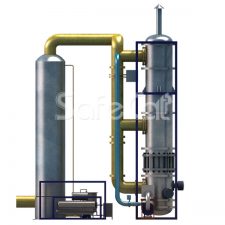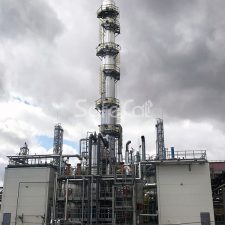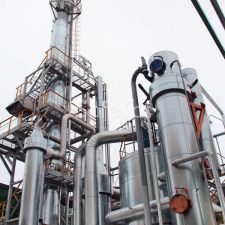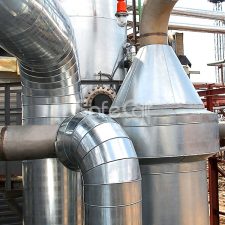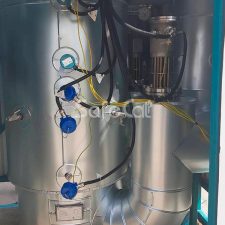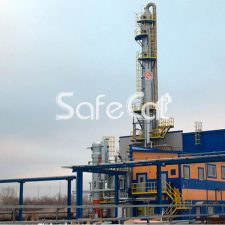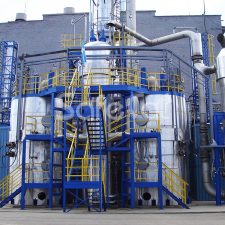Safe Technologies together with the Boreskov Institute of Catalysis is developing a range of plants for the treatment of volatile organic compounds.
Unique catalyst based on fiberglass material containing an ultra-small amount of platinum has been developed. Glass stabilizes nanometer-sized Pt-PtOX clusters that activate molecular oxygen and facilitates the complete oxidation of a wide range of organic pollutants.
Platinum clusters are localized in fiberglass at a depth of 10 nm. The reaction rate does not decrease due to diffusion processes. There is no direct contact of poison molecules with active centers; therefore, the catalyst is resistant to catalytic poisons (S, Si, heavy metals, etc.).
The thermal stability of Zr-silicate glass fibers enables the afterburning of volatile organic compounds (VOCs) at higher temperatures (up to 800°C) than in oxide and metal catalysts at traditional carriers. Due to the skeleton structure of Zr-silicate glasses, sintering of Pt nanoparticles and the decrease in the activity of the catalyst do not occur.
The rotor concentrator block is necessary for the effective treatment of low-concentration high-volume gas flows. Part of the rotor performs the function of adsorber, on the surface of which VOCs are adsorbed. In the remaining part, they are desorbed (adsorbent regeneration) by a flow of hot gas and the sorbent is cooled with cold gas to prepare for adsorption. The concentration of VOCs after the regeneration section increases 10 times or more. The inertia of the rotor as an adsorber levels down the output concentration of VOCs with periodic emissions.
A plate heat exchanger with a dimple structure of plate unevenness has been developed for the recovery system. It enables to withstand high temperatures with an acceptable increase in hydraulic resistance and has a low production cost.
Working samples of rotors based on ceramic honeycomb blocks (cordierite) with zeolite deposited on the surface have been created. VOC adsorption occurs from the moist air stream, and water due to its higher polarity will be adsorbed primarily and displace non-polar organics. Therefore, a zeolite with an MFI structure was selected, which is capable of adsorbing nonpolar organic substances and not losing its adsorption properties in the presence of water. Selective sorbent is developing based on a ceramic fibrous material (fabric) coated with a zeolite MFI, which has less mass and thermal inertia than cordierite. Devices based on these sorbents can be used in the processes of CO2 concentration, selective adsorption (separation), purification of circulation and waste water from organic and organochlorine, as well as oil and oil contaminants.
Catalytic treatment plants are manufactured on a turnkey basis. This provides control over all stages of design and production.
Authors: Konstantin Ladygin, Semen Stompel, Arkady Smirnov (Safe Technologies Inc), Evgeny Kovalev, Bair Balzhinimaev (Boreskov Institute of Catalysis).
The article ‘Catalytic Oxidation Gas Treatment’ was published in the journal ‘Industrial Ecology’, September 2018.
When using the material/any part of it (media content), a reference to authorship and the site (www.safe-cat.com) is required.

